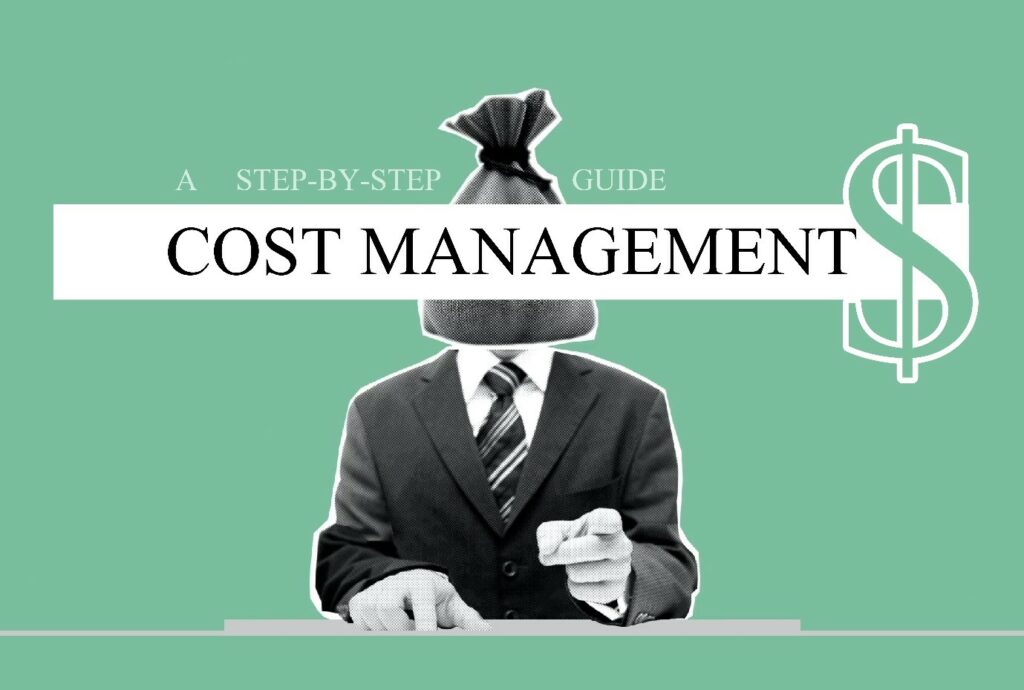
In today’s economic world, we cannot ignore the fact that the budget is considered a top priority in any project—be it a small or large-scale project. All clients are looking for project managers who are ready to stay under the budget, without compromising on the quality or any other key requirement. This is where a smart cost management comes into play, as a part of the project management process.
Cost management is the estimation, allocation and control of the cost incurred in a project that makes sure that there is no budget overrun—that the actual cost is equal to or lesser than the predicted cost. A smart cost management:
- Maximises cost-efficiency
- Helps in planning the resources required
- Reduces project risks arising due to improper cost controls
- Provides benchmarks for cost planning in future projects
Did you know? A good cost management is all about the process. If you’re looking for an effective cost management plan, read ahead.
Have a look at this step-by-step guide designed by top management experts!
Too busy to read? Contact our expert team over a quick call and find out the best cost management plan suitable for your project!
Step 1: Estimation & Budgeting

This step in cost management is a quantitative method that calls for the prediction of the cost incurred in the project for the n number of resources such as material, manpower etc. In a smart cost management process, the estimation is done with high accuracy using modern-day assessment models that consider key factors such as fixed costs, variable costs, overhead costs, the time value of money etc.
A good project estimation assesses the following:
- Resource planning—the plan and calculation of the resources required for the work
- Resource pricing—the per-unit cost of each resource
- Duration—the stipulated time for which the resources will be required
- Risks—the potential risks during the process that may require coverages
Some commonly used models in such assessments include:
- Mathematical models such as PERT (Program Evaluation and Review Technique)
- Benchmark-based approaches such as Top down approach
- Task-based calculations such as Bottoms up approach
Budgeting, on the other hand, deals with the allocation of costs to different parts of a project—broken down as per the Work Breakdown Structure. In a smart cost management process, budgeting promises a good cash flow, along with contingency reserves to manage the risk of unexpected costs.
A good budgeting process:
- Allocates sufficient budget for a stipulated time given for a specific task
- Creates a cost baseline that serves as a reference for evaluation throughout the project
- Helps the decision-makers in planning the funds
Eager to see how good estimation and budgeting help achieve a successful project? Check out our industrial projects that required stringent cost management plans for their fruitful completion.
Step 2: Concretizing the Cost Controls

This step in cost management manages the difference in cost i.e. the cost variance with reference to the baseline budget. This can be done by:
- Cutting short on the scope of work
- Increasing the budget allocated for the particular work
In addition to the above, a cost management plan is also created at this stage. This helps in measuring the project performance along with key areas of the project’s goals using some important tools and techniques that include:
- Earned Value Management, measuring a project’s progress with reference to the plan.
- Variance Analysis, analysing the cost variance—the difference between the budget and the actual cost.
- To Complete Performance Index (TCPI), charting the level of work/performance required to keep the budget in check.
- Performance reviews, measuring project performance through a number of factors including cost, schedule, quality etc.
- Forecasting, using the current financial situation to predict future costs.
A good cost control:
- Measures data that serve as references throughout the project cycle
- Analyses the threshold for cost variance and provides action plans to manage the same
- Provides transparency for the decision-makers
- Helps the project manager at times of unprecedented risks
Step 3: Recording the Statistics
Gone are the times when project managers relied on bundles of hard copies for the analysis of data. Modern tools and techniques have enabled a much easier recording process that also provides:
- Quick turnaround time in compiling and analysing data
- Easily accessible online reserves that can be referred to, at any point of time
- Reliable approaches that provide transparency in the process, among others.
A good statistical record:
- Records continual progress with weekly reports, dashboards etc.
- Deduces accurate data that may be as small as hourly wages etc.
- Simplifies complex situations such as multicurrency management etc.
- Makes room for third-party interventions or solutions at any given time
- Helps in creating benchmarks for future projects
The modern, software-based approaches to managing the statistical data have reduced the complexity of the cost management processes with simpler solutions that only the best project managers are aware of.
Are you looking for such a project manager? Find them here.
The Glossary of terms in Cost management
Cost management process is rigorous, and hence, complicated. In such situations, it is best to make yourself familiar with the common terms used in the process, so that you and the teams are on the same page when it comes to the management processes.
Have a look at some of the key terms in cost management listed below:
- Budget: The initial fund allocated for a project over a fiscal period
- Monthly budget: The budget allocated for a specific month in a project’s cycle
- Estimated Cost: The cost estimated for the project’s proceedings considering the resources, scope, time etc.
- Actual Cost: The cost incurred in the project for a given interval of time
- Planning phase: The phase of a project where planning (including cost plans, designs etc.) takes place
- Execution phase: The phase of a project where the execution of work takes place
- Contingency: The plan or provisions for unexpected costs occurring due to risk situations etc.
- Metrics: The mathematical data measured to provide insights into the management process
- Reporting time: The scheduled time at which all project-related data are to be reported to the concerned authorities
Stuck with people who confuse you with complex terms? Try going for straightforward and practical project managers like SSACT. We root for informed clients and collaborators and are always ready to go a step forward to help people understand better and grow together!
Check out our motto here.
If you’d like to have a friendly chat, contact us! We are always happy to discuss.

